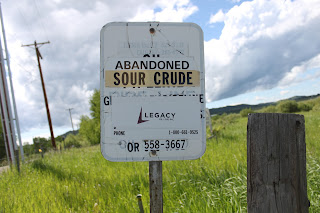Arctic Land Animals Lose Habitat Along With Sea Ice
B. McPherson
Ice caps are Earth's air conditioners
Sea ice in the Arctic Ocean is thinning and disappearing
quickly. Each summer the ice retreats sooner and farther. The alarm has been
sounded for those mammals that use the ice as haul out sites – seals, polar
bears – but little attention has been given to the land animals that inhabit
the Arctic tundra.
A new article published by Science and authored by Eric Post
of the University of Penn State and Jedediah Brodie of the University of
British Columbia as well as other contributors points out how the retreat of
sea ice and the warming of the tundra will have a profound impact on the land
based animals and plants as well. The land animals use frozen ocean sections as
bridges. Warming of the tundra, melting the permafrost may create open swamps
and lakes, thwarting the migration of animals like the caribou. The loss of
these pathways means an increasing isolation of populations.
A rare but increasing phenomenon being seen of late is the
interbreeding of grizzly and polar bears. Polar bears are spending an increasing
time ashore and coming into contact with grizzlies. The result – grolars – an
nightmare beast.
As more sea ice melts, the timing of alage blooms change.
This throws off the timing of fish and sea birds as well. Do the migrating
birds return too early or too late to slurp up the nutritious green soup? If
the birds don’t thrive, the arctic foxes who prey on them don’t either and so
on.
The retreating sea ice is not the only problem facing the
Arctic. Warmer temperatures and drier conditions have set the scene for massive
fires in the tundra. Wildfires in northern Saskatchewan and Manitoba are
sending massive amounts of smoke curling north along the Hudson’s Bay. The
sooty deposits land on the ice and encourage even faster melting.
Much of Canada’s and Russia’s north is an area of perma
frost. While surfaces may thaw, the deeper soil layers remain frozen year
round. As the Earth’s climate warms, the swampy areas thaw, releasing methane
gas, a powerful greenhouse gas. This further encourages more melting.
Scientists are concerned about the far north because there
is the possibility of a positive feedback loop being set up. Following is a
very simplified version.
Air warms àmore
ice melts àopen
ocean is exposed, darker than white ice à
more ice melts à
ice melts on land faster à
permafrost starts to melt, releasing methane à
accelerating greenhouse gases àair
warms àbrown
earth absorbs more heat than snow covered à
more ice melts
More information: Arctic News

Comments
Post a Comment